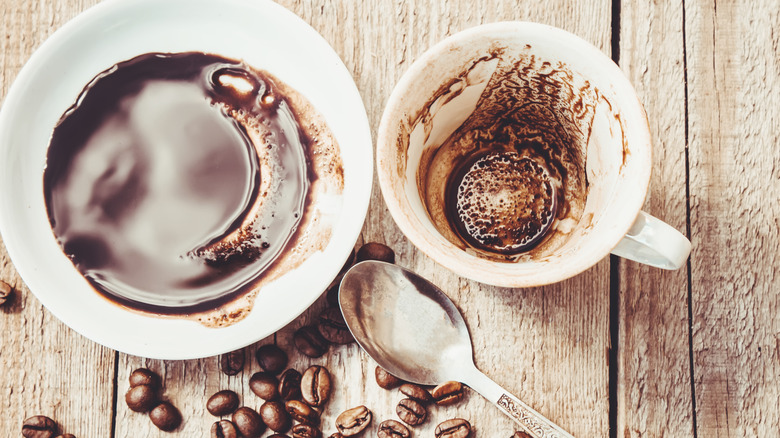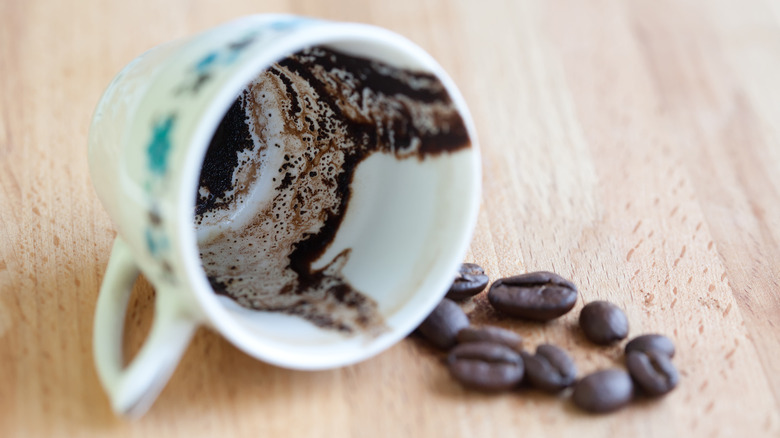How To Reduce The Amount Of Sediment In Your Coffee
Tired of taking a swig of your morning coffee and feeling like you have a mouthful of sand? You're not alone. Nothing will ruin a good cup of coffee more than finding grainy sediment in it, but thankfully, every problem has a solution. Unlike instant coffee, coffee grounds used in equipment like espresso machines, moka pots, and French Presses don't dissolve. The sediment in your coffee is essentially these indissoluble coffee grounds that slip past the filter and into your drink.
One of the main reasons why this might happen is because the coffee is ground too finely. A French Press, for example, requires especially fine coffee grounds, which are more prone to leaving sediments in your coffee. Coarser coffee grounds, on the other hand, will leave fewer sediments. This is why one of the best ways to reduce the chances of sediments is to grind the coffee yourself (via The Commons). Consider investing in a coffee grinder, which gives you more control over the size of your coffee grounds. Buy whole coffee beans rather than pre-ground ones and grind them more coarsely at home. As a result, you'll have far less sediment in your cup of coffee.
Other ways to reduce coffee sediments
While grinding coffee beans to a more coarse texture will reduce sediment in your java, it isn't the only change that you can make. Just because coffee makers like French presses or moka pots have their own mesh filters doesn't mean that it's the only sieve that you can use. You can always use a second strainer by placing a kitchen sieve in your cup before pouring the coffee into it to further filter the sediments.
In some cases, the sediment may have nothing to do with your coffee grounds at all. Not cleaning your coffee makers regularly and thoroughly can cause a build-up of residue that may eventually slip into your drink. Even the kind of water that you use may be playing its part in the gritty texture of your coffee. Tap water, especially if it's hard, can cause minerals to clog filters in coffee makers, leaving more residue in your cup.
If grinding your own beans or straining coffee is too much effort, there's also the option of simply waiting for the sediment to settle at the bottom of your coffee cup. Because the grounds are denser than the liquid, they will eventually settle at the bottom and leave most of the liquid on top sediment-free. Drink your coffee as usual and simply toss the last few sips that are full of sediments away.

